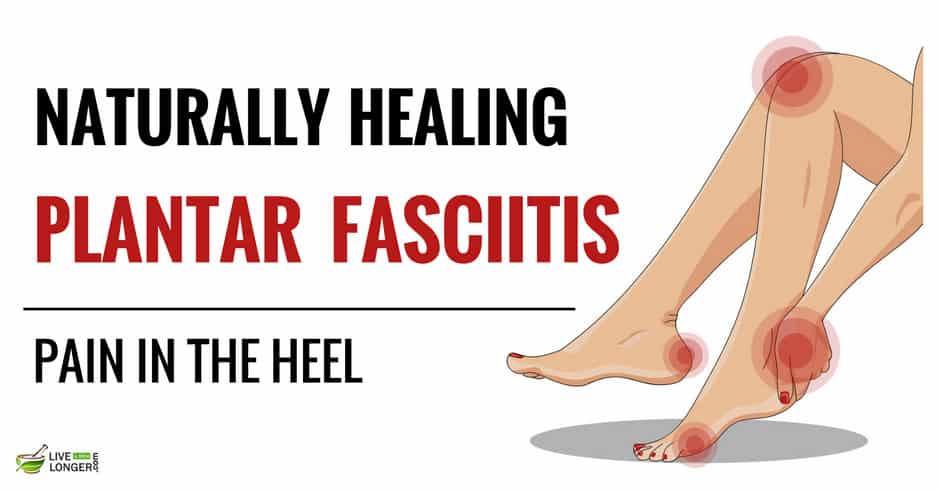Ignore Heel Pain: Plantar Fasciitis Treatment and Prevention Tips
Plantar Fasciitis: Symptoms, Treatment and Prevention

In this final article in both part series on Plantar Fasciitis, Brad Walker discusses the common symptoms of this painful sports accident as well as the utmost effective treatments once diagnosed. Brad also describes some very important preventative measures that are crucial to avoid Plantar Fasciitis. A feet injury such as plantar fasciitis generally occurs in a single foot. Bilateral plantar fasciitis is unusual and tends to be the consequence of a systemic arthritic condition that is remarkably rare among sports athletes. Males have problems with a somewhat increased occurrence of plantar fasciitis than females, perhaps consequently of greater weight in conjunction with greater velocity and floor impact, as well as less overall flexibility in the feet.Typically, the sufferer of plantar fasciitis experience pain upon rising after sleep, particularly the first step out of foundation. Such pain is firmly localized at the bony landmark on the anterior medial tubercle of the calcaneus. In some cases, pain may prevent the athlete from walking in a normal heel-toe gait, triggering an unusual walk as means of payment. Less common areas of pain are the forefoot, Calf msucles, or subtalar joint.After a brief period of walking with this kind of foot injury, the pain usually subsides, but returns again either with vigorous activity or prolonged standing or walking. In the field, an changed gait or unnatural stride design, along with pain during jogging or jumping activities are tell-tale indicators of plantar fasciitis and should be given quick attention. Further indications of the accident include poor dorsiflexion (raising the forefoot off the bottom) credited to a shortened gastroc complex, (muscles of the calf). Crouching in a complete squat position with the sole of the foot flat on the ground can be utilized as a test, as pain will preclude it for the athlete suffering from plantar fasciitis, leading to an elevation of the heel due to tension in the gastroc complex.TreatmentTreatment of plantar fasciitis may also be a drawn out and annoying process. An application of rehabilitation should be performed by using someone experienced and knowledgeable about the affliction. Typically, plantar fasciitis will require at least six weeks and up to six months of conservative treatment to be totally remedied. Should such efforts not provide comfort to the athlete, more ambitious actions including surgery may be considered.The initial goals of physical remedy should be to increase the unaggressive flexion of the foot and improve overall flexibility in the foot and ankle, eventually resulting in a full go back to normal function. Prolonged inactivity in strenuous sports is usually the price to be payed for thorough recovery. 50 percent measures can lead to a chronic condition, occasionally severely limiting athletic ability.As a big timeframe is spent in bed during sleeping time, it's important to ensure that the bed linens at the base of the foundation do not constrict the feet, resulting in plantar flexion where the foot is bent straight out with the toes pointing. This constricts and thereby shortens the gastroc complex, worsening the condition. A heat pad placed under the muscles of the leg for a few minutes prior to rising may help release tension, increase circulation in the low leg and decrease pain. Also while asleep, a night time splint can be utilized in order to carry the ankle joint in a natural position. This can assist in the restoration of the plantar fascia and ensure that the feet will not become flexed during the night.Attention to footwear is crucial in avoiding foot injuries. Every effort should be made to wear comfortable shoes with proper arch support, fostering proper feet posture. Should arch facilitates prove insufficient, an orthotic boot is highly recommended. Fortunately, most situations of plantar fasciitis act in response well to non-operative treatment.Recovery times however range enormously in one athlete to another, depending on get older, overall health and physical condition as well as seriousness of injury. A wide period between 6 weeks and six months is usually sufficient for proper recovery. Additionally, the method of treatment must be adaptable with regards to the details of a specific athlete?s harm. Methods that confirm successful in a single patient, may well not improve the personal injury in another.Early on treatment of foot injuries typically includes the use of anti-inflammatory medication, icing, stretching activities, and heel inserts and splints. Cortisone injections may be necessary to achieve satisfactory recovery and retard irritation. In later stages of the treatment process, typically after the first week, snow should be discontinued and substituted with heating and massage.It is critical that any activity known to produce irritability or injury to the plantar fascia be immediately discontinued, including any activity involving repeated impact of the heel on a hard surface, particularly, operating. Should pain associated with the harm persist, additional diagnostic studies should be undertaken to rule out other, more incredible factors behind heel pain including stress fractures, nerve compression traumas, or collagen disorders of your skin.
Ignore Heel Pain: Plantar Fasciitis Treatment and Prevention Tips's Picture
Related Images with Ignore Heel Pain: Plantar Fasciitis Treatment and Prevention Tips
10 Best Home Remedies For Plantar Fasciitis Heel Pain

Home Remedies For Plantar Fascia or Plantar Fasciitis

PLANTAR FASCIITISHeel Pain is caused when the plantar fascia gets

fasciitis remedies fasciitis fixes and more remedies plantar fasciitis







0 komentar: